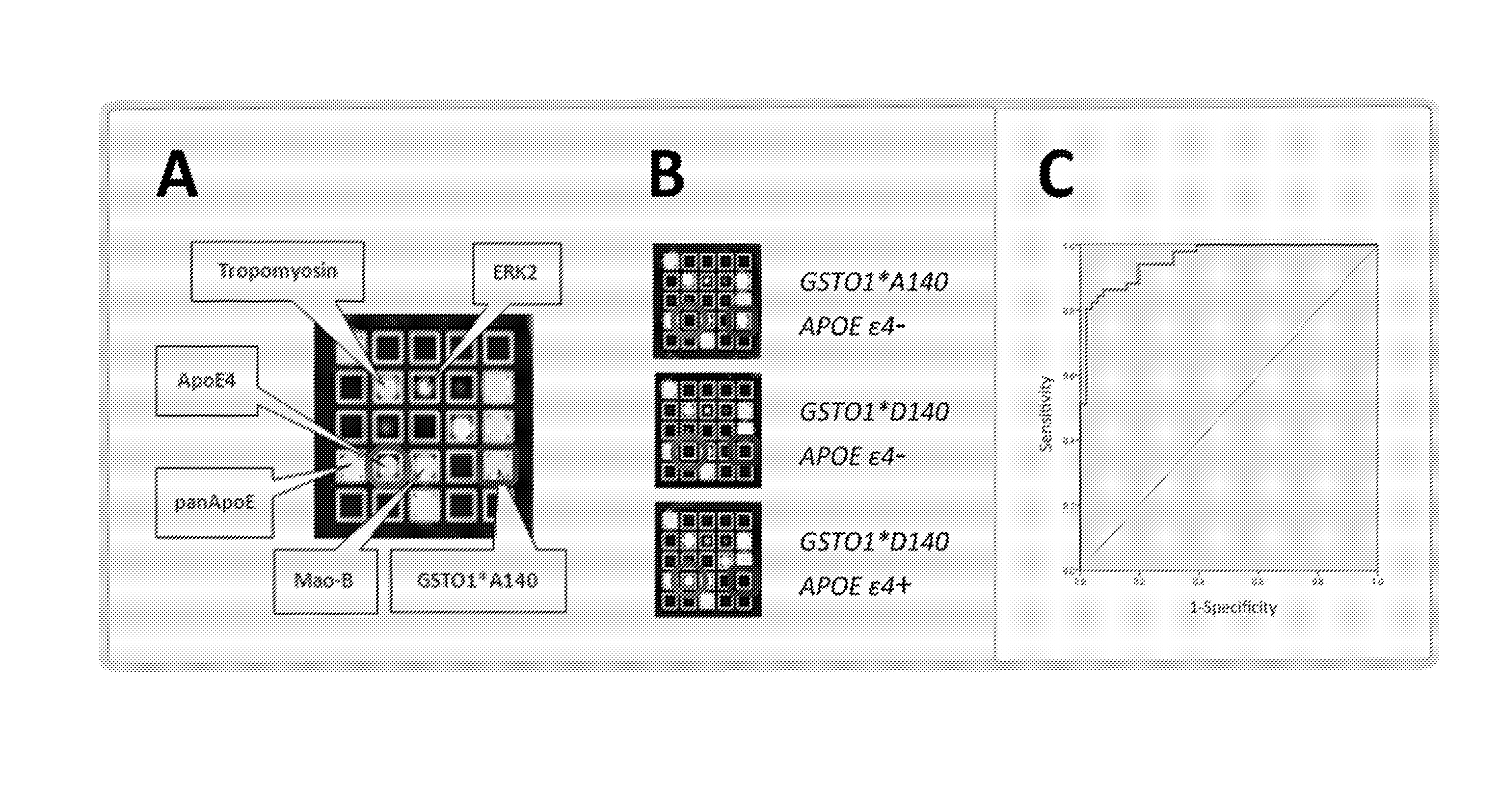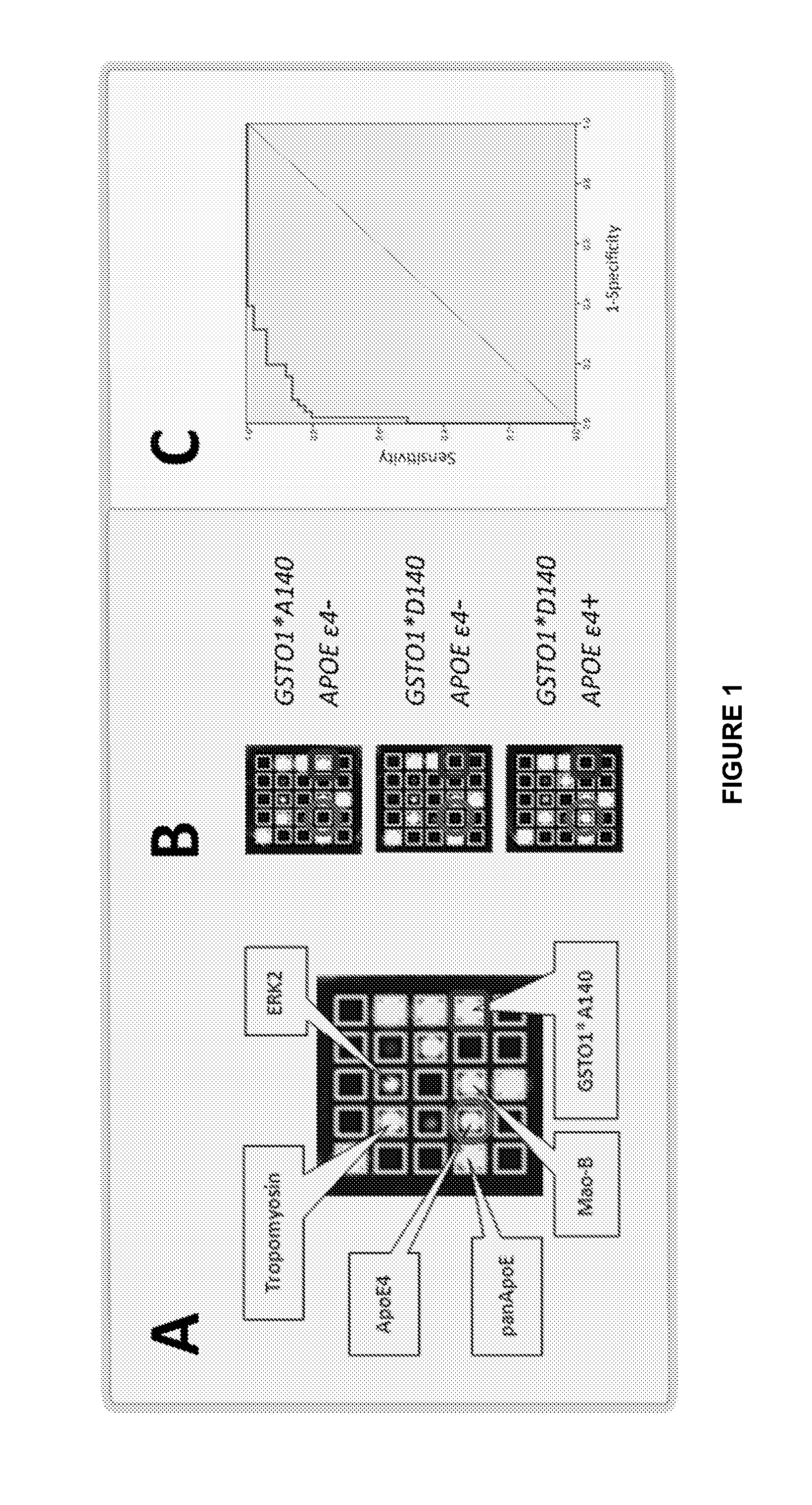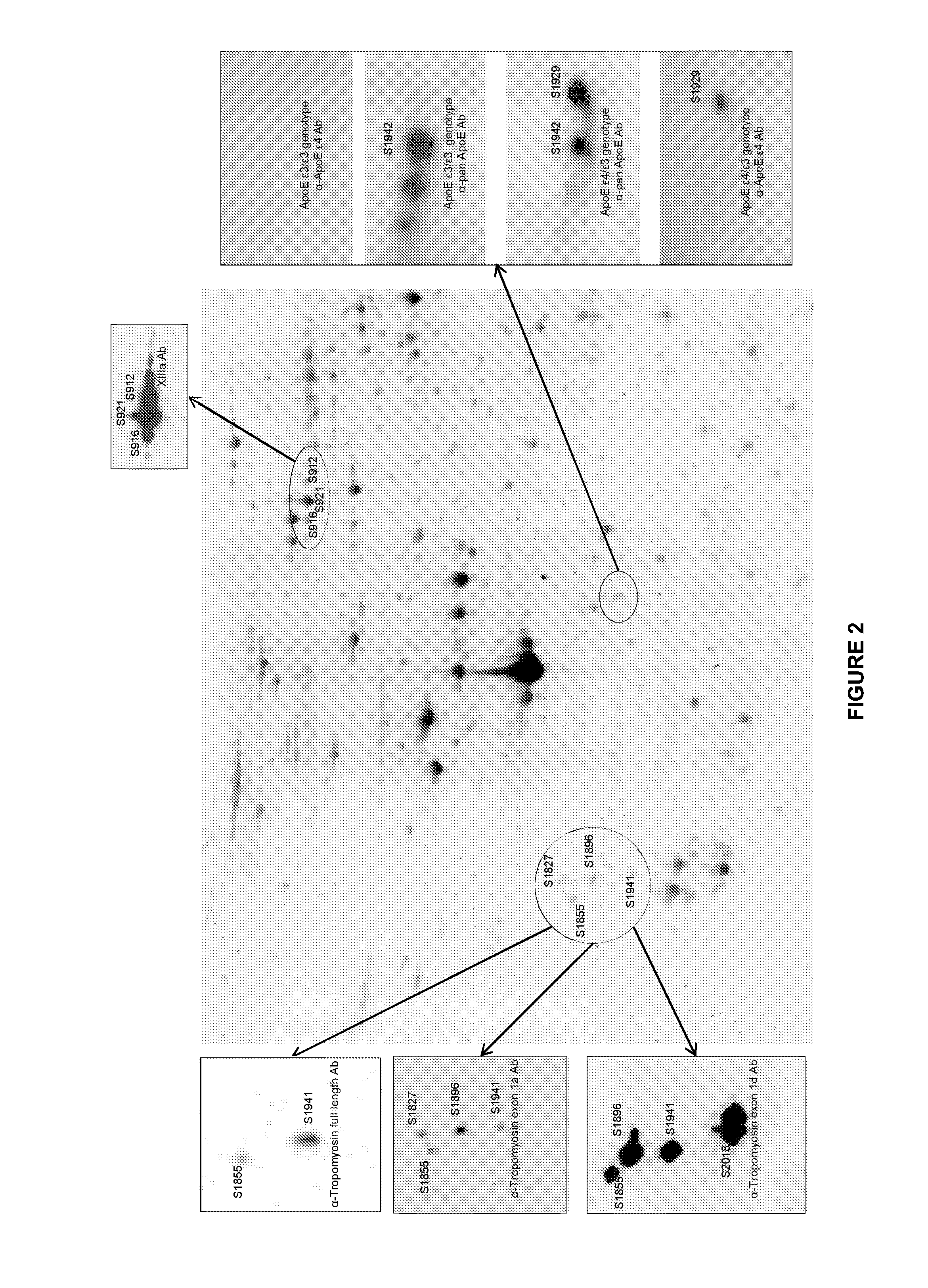Method for aiding diagnosis of alzheimer's disease
a technology of alzheimer's disease and diagnosis method, applied in the field of ex vivo diagnosis method, can solve the problems of difficult diagnosis, amyloid plaques and neurofibrillary tangles can only be determined, and the presence of alzheimer's disease-characteristic neurological and neuropsychological features,
- Summary
- Abstract
- Description
- Claims
- Application Information
AI Technical Summary
Benefits of technology
Problems solved by technology
Method used
Image
Examples
example 1
Method
[0094]49 Alzheimer's disease patients (mean age=81±8.2 years) and 52 age- and sex-matched control individuals (mean age=80±8.5 years) were analysed by 2-dimensional differential gel electrophoresis (2D DIGE). Furthermore, the ApoE4 genotype and the polymorphism rs4925 of GSTO-1 at amino acid position 140 (alanine versus aspartate) of these individuals were determined.
[0095]Algorithms of the most significant LOAD-biomarkers were generated using simple sum scores and were assessed by Receiver operating characteristic (ROC) curves and Area under the curve (AUC).
Study Cohorts
[0096]This study was designed as a two stage pilot for the identification of AD biomarkers in the platelet proteome by 2D DIGE. For this reason a statistical evaluation was made from both pH ranges from the discovery set. From these training cohorts the biomarkers were selected and concomitant statistically evaluated in a second verification stage. Only those protein spots were chosen in training phase that we...
example 2
[0113]The inventors investigated the translation of the proteomic 2D-DIGE results to the new protein biochip technique by conducting statistical analysis of 51 AD and 51 control samples with either 2D-DIGE or the novel protein biochip of the invention.
[0114]As shown in FIG. 8, both techniques were found to have good separation power of AD-patients and controls. At an optimal biochip cutoff of 3.066, the specificity was 86.3% (seven false positives) and the sensitivity even 96.1% (two false negatives).
[0115]FIG. 8(A) shows the scatter blot of the sum scores (arbitrary units, n=102) calculated from the Mao-B and tropomyosin concentrations combined with the APOE ε4- and GSTO1-allele count of. For APOE ε4-negative subjects, 0.6*GSTO1*A140 alleles were added, whereas 0.9*GSTO1D140 alleles were combined with the APOE ε4 alleles. AD-patients and control samples could be separated with a high sensitivity (94.1%) and specificity (90.2%) with a set cutoff of 3.5. Protein Biochip sum scores ar...
example 3
[0117]The number of alleles of ApoE4 in a patient's genome can determined at the protein expression level, using an ApoE4-specific antibody and, optionally, a panApoE antibody. The data presented in Table 8 show that at a measured concentration of >19.1 ng / ml, use of an ApoE4 antibody gives 100% sensitivity and specificity for determining the presence of 1 or 2 ApoE4 alleles. The data presented in Table 9 show that the use of the ApoE4 to panApoE4 ratio completely discriminates 0, 1 and 2 allele genomes. It is therefore preferably to use antibodies directed against both ApoE4 and panApoE and to calculate the ApoE4: panApoE4 ratio, in order to determine a patient's ApoE4 allele genotype at the protein level.
TABLE 8ApoEApoE4panApoEAv. conc.Av. conc.SampleApoE4[ng / ml][ng / ml]A1672600.5307.1A442473.4172.0A412463.5165.3A432452.9157.3A1832418.3209.1A1232397.2415.8A342368.3140.7A362359.6134.3A632352.3116.8A812334.194.5A591301.7546.9A491270.5770.9A621243.5634.2A1632208.190.0A381201.5908.7A11...
PUM
 Login to View More
Login to View More Abstract
Description
Claims
Application Information
 Login to View More
Login to View More - R&D
- Intellectual Property
- Life Sciences
- Materials
- Tech Scout
- Unparalleled Data Quality
- Higher Quality Content
- 60% Fewer Hallucinations
Browse by: Latest US Patents, China's latest patents, Technical Efficacy Thesaurus, Application Domain, Technology Topic, Popular Technical Reports.
© 2025 PatSnap. All rights reserved.Legal|Privacy policy|Modern Slavery Act Transparency Statement|Sitemap|About US| Contact US: help@patsnap.com



